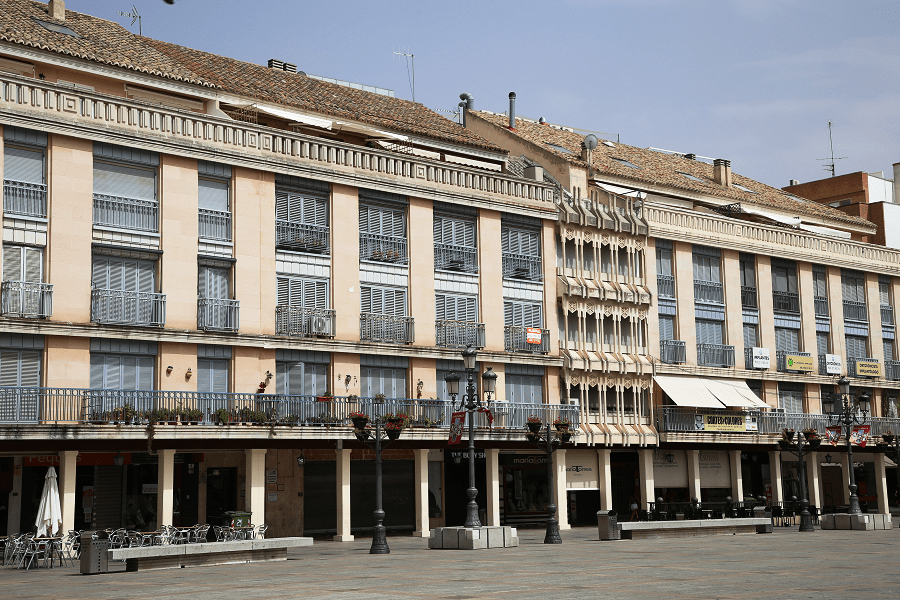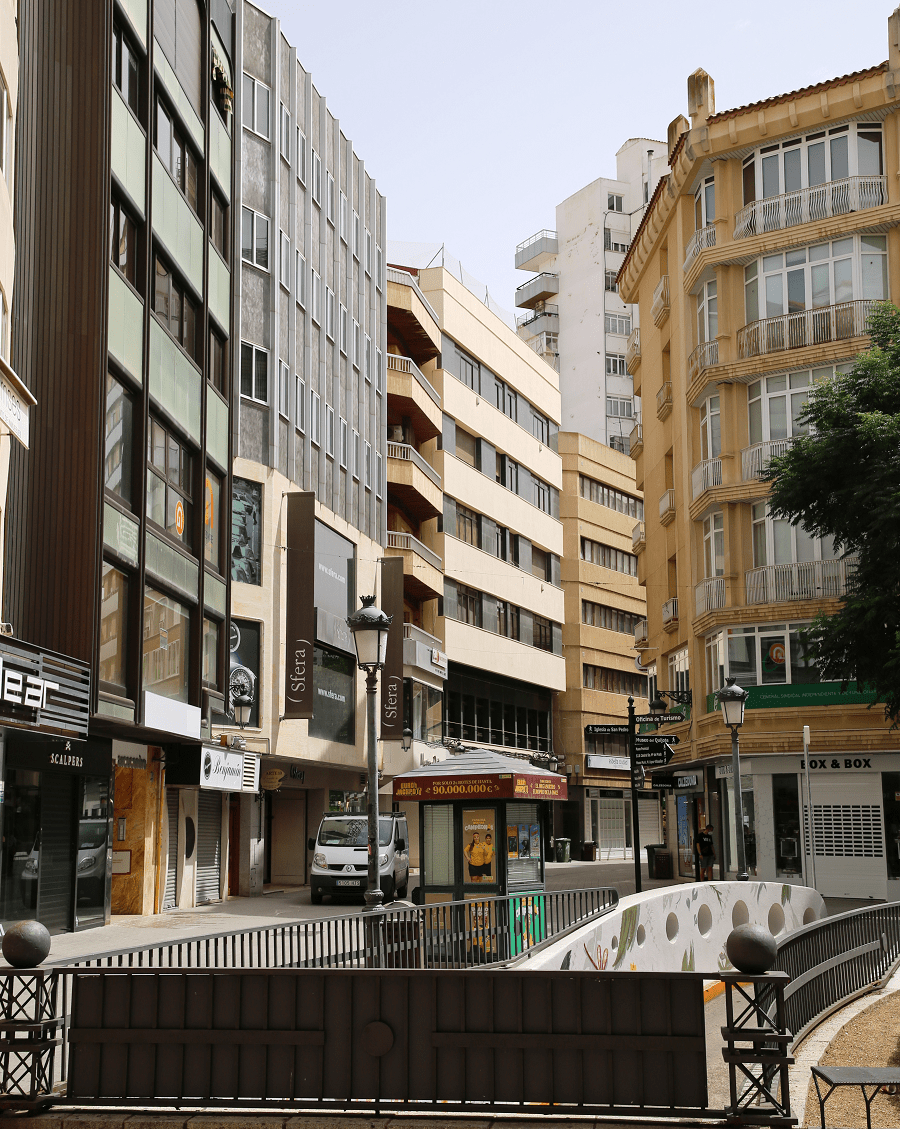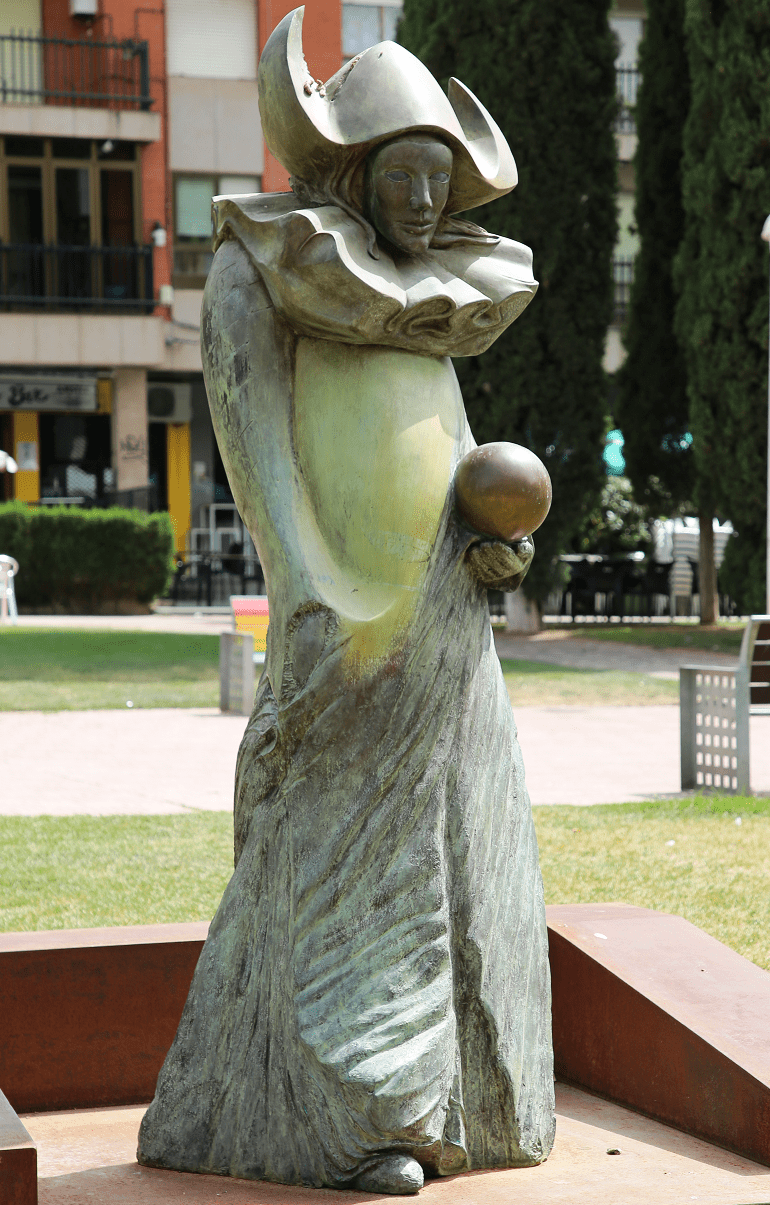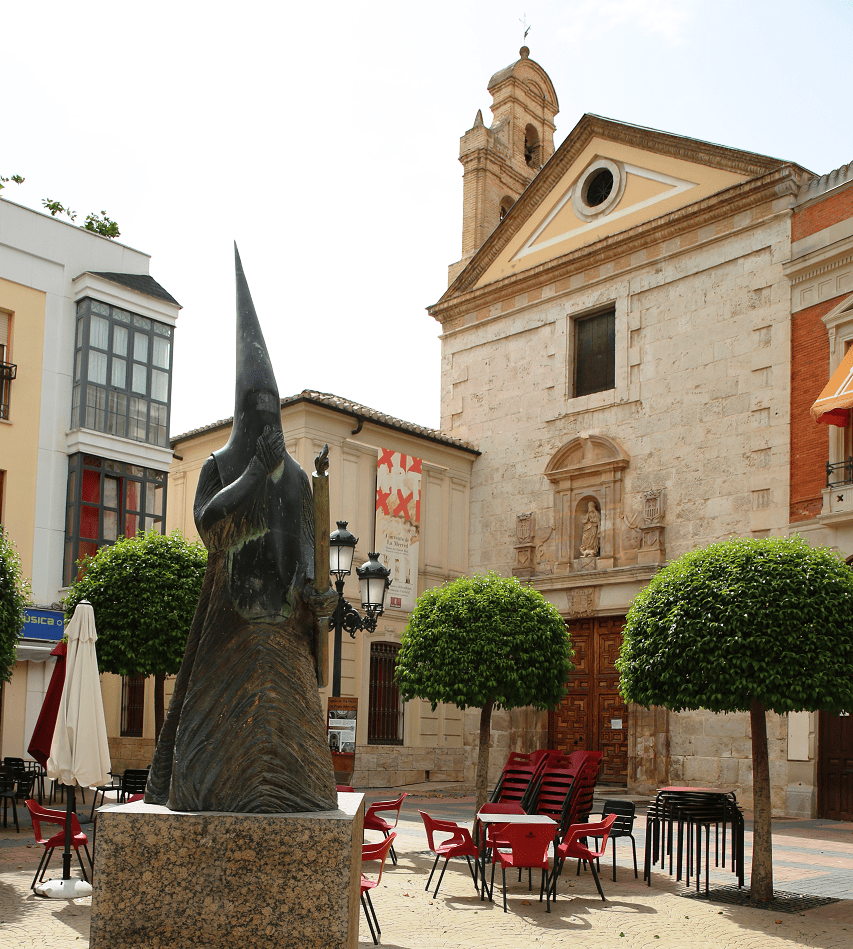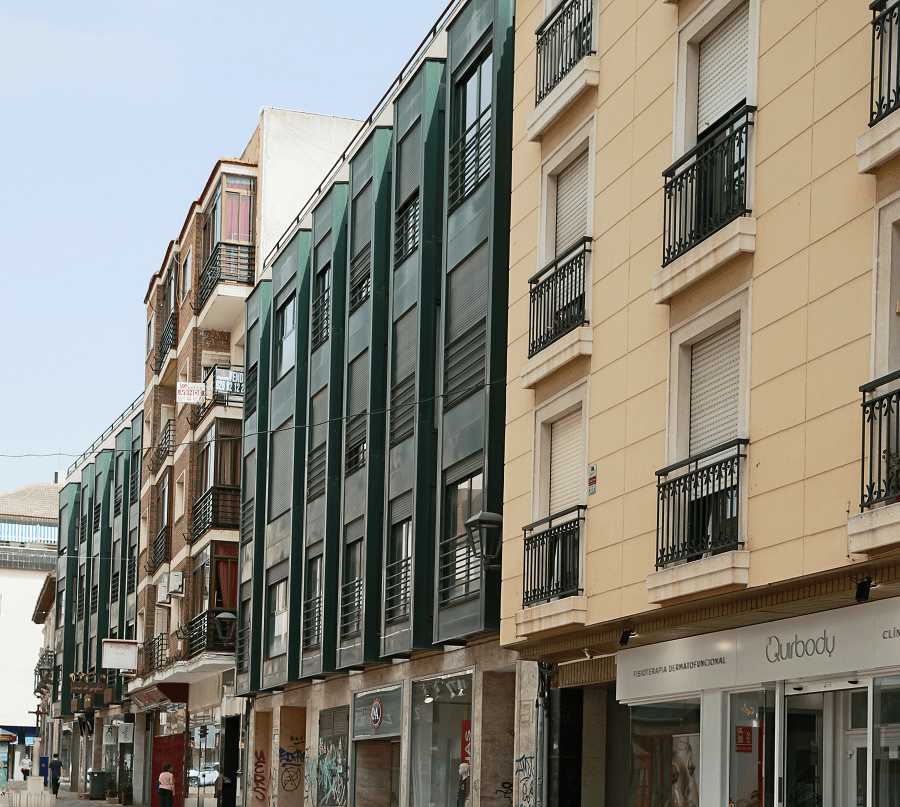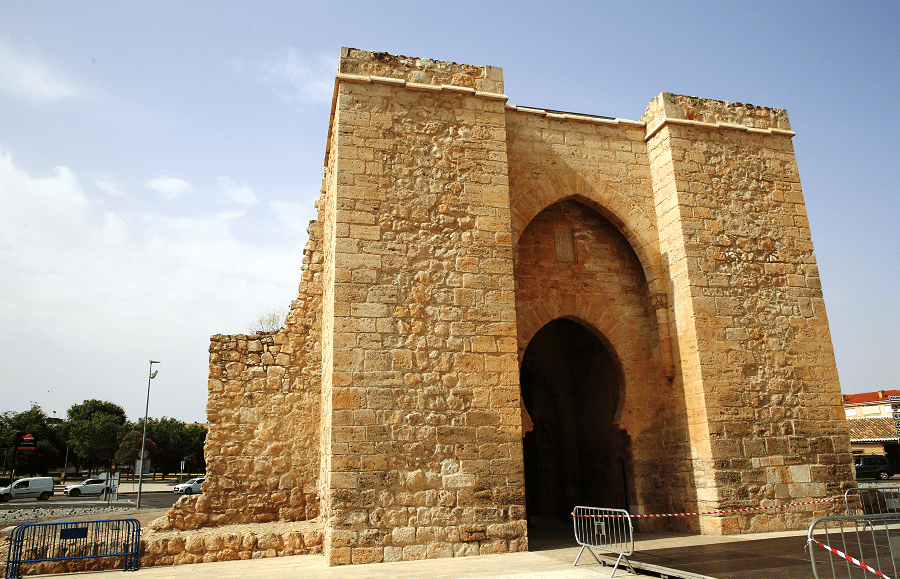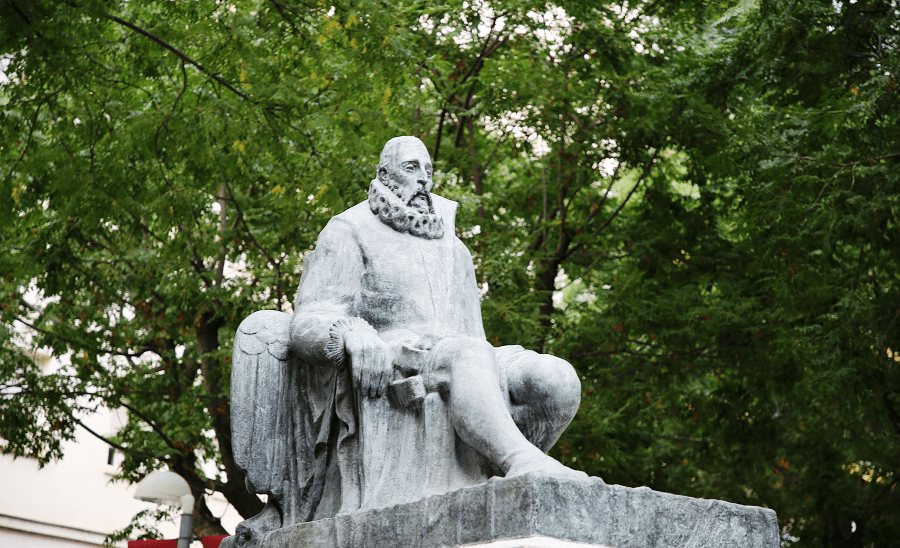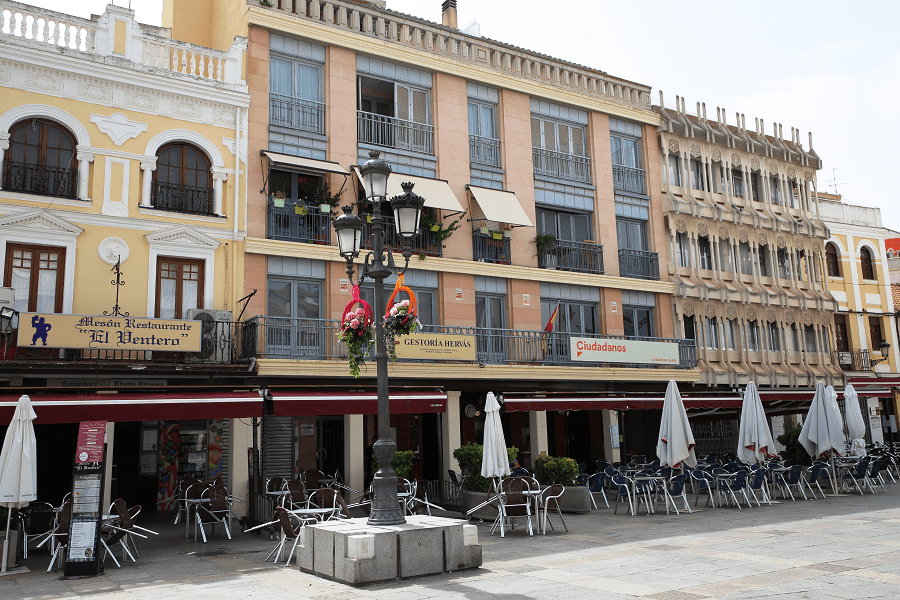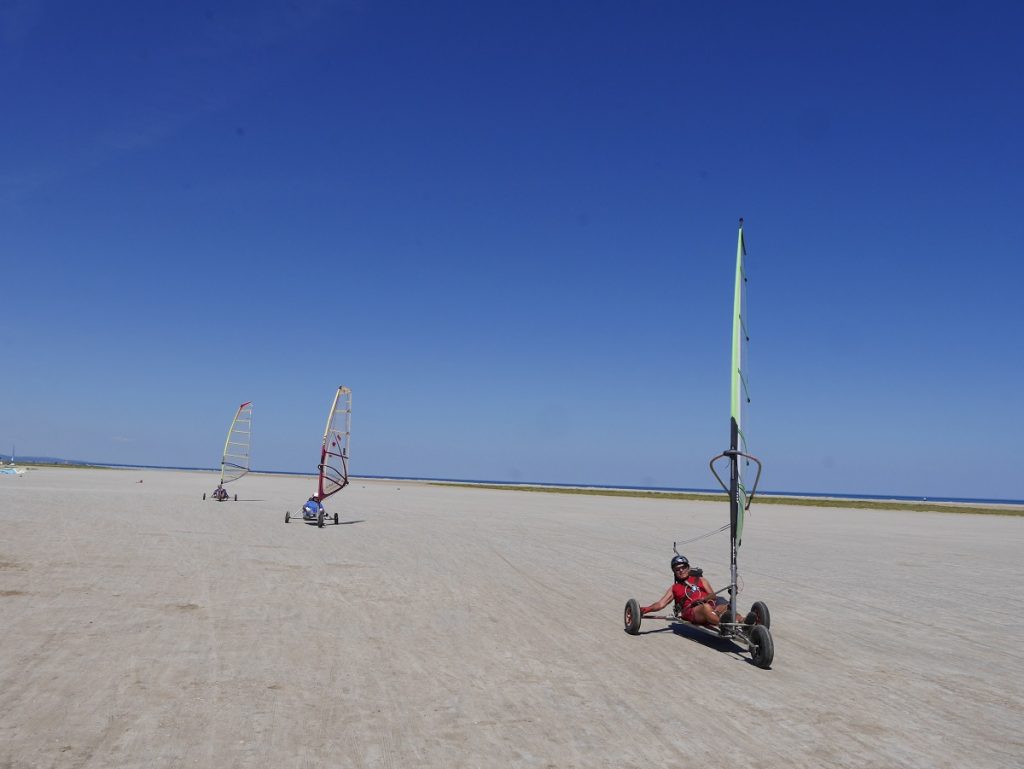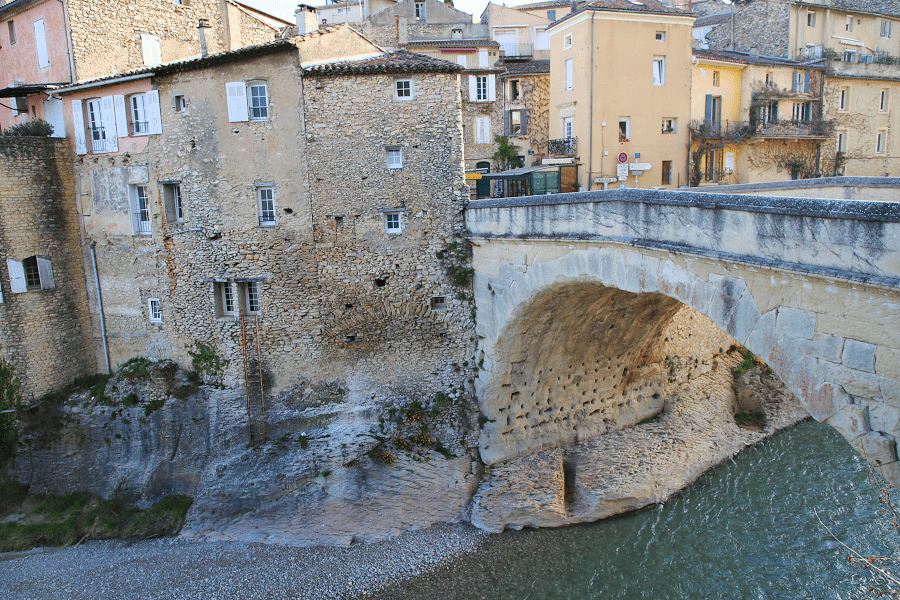Ciudad Real is a city and municipality in Spain located in the autonomous community of Castile–La Mancha, capital of the province of Ciudad Real. It is the 5th most populated municipality in the region.
A part of the Don Quixote Route.
Tourism and main attractions
Religious architecture
Cathedral of Nuestra Señora del Prado: originally a Romanesque hermitage. According to tradition, in 1088, the Virgin appeared on that site to the locals of the village of Pozo de Don Gil. In 1531 the church of Santa María was built, leaving only the southern door called El Perdón from the original Romanesque hermitage. The impressive four-section tower was started in the 17th century and completed in the 19th century.
The interior has a single nave, this being the only cathedral in Spain of these characteristics, with a highly ornate pseudo-ribs from the late Gothic. But what gives the Cathedral its personality and stamp is its magnificent 1616 altarpiece by the sculptor Giraldo de Merlo and the painter Juan de Hasten.
Church of San Pedro: national monument by decree of July 20, 1974. 14th century Gothic building, ordered to be built by the Knights of the Flower and Cream of Ciudad Real, it is worth noting from its exterior the tower with spire and its three doors, the Romanesque del Perdón, named for being in front of the Prison of the Holy Brotherhood, Umbria and the Sun.
From its interior, undoubtedly, apart from its harmonious distribution of space and the forest of columns in the ribbed vaults, its capitals with singular themes, such as heads of man, animals or plants; but the most outstanding feature that surprises the visitor is the Capilla de los Coca, it houses the recumbent tomb of the cantor of the cathedral of Coria and confessor of Isabel I of Castilla, Fernando Alonso de Coca, a Spanish-Flemish work from the 15th century with a clear resemblance to the Doncel.
Iglesia de Santiago: church from the late 13th century is the oldest preserved in Ciudad Real. Inside, a true treasure of rural late Romanesque, we can find in its central nave a Mudejar coffered ceiling from the 14th century with laceries and octagonal stars ordered to be built by the Master of Calatrava Don Pedro Muñiz de Godoy, at the end of which in the central Gothic apse.
It is worth highlighting a Gothic mural in the nave of the Gospel with the iconographic representation of the Mass of Saint Gregory, as well as various capitals with demons and pilgrim figures and shells of Santiago in the side naves.
Convent of the Discalced Carmelites: 17th century Renaissance and Baroque convent and church, it was originally a monastery of the Order of Montesa ordered to be built by Don Antonio Galiana y Bermúdez, knight in Montesa. In 1956 it was occupied by Discalced Carmelites.
Convent of the Mercedarios: the emblematic building of the Old Convent of La Merced, from the 17th century. The first secondary school in the province was located in this building. In 2005 it was rehabilitated for the celebration of the IV Centenary of Don Quixote and currently houses the collection of Fine Arts of the Museum of Ciudad Real and a selection of contemporary Spanish art representative of the 19th-21st centuries. On its side is the famous Passage de la Merced.
Door of the convent of Nuestra Señora de Altagracia de las Dominicas: currently located in the Ronda de Santa María, where formerly the door of Santa María of the medieval city wall was. It is the only vestige that remains of the old Dominican convent demolished in 1969 due to the poor conditions in which it was found. So it was decided to place the front of the convent church as a monument in one of the roundabouts of the Ronda that surrounds the city.
Hermitage of Alarcos: Gothic in style from the 13th century, it has a Latin cross floor plan in which the magnificent tracery rose window stands out. It is divided into three naves, separated by ten pillars with attached columns that have capitals with alternate heads and leaves. This sanctuary is dedicated to the Virgin of Alarcos. It is located within the archaeological park of Alarcos, which has archaeological remains, both from medieval and Iberian times.
Civil architecture
Puerta de Toledo: a national monument since 1915, a magnificent example of military architecture from the 14th century, ordered to be built around 1255, and completed in 1328 by King Alfonso XI of Castile. Supported by two towers on each side, it has six arches: the ogival exteriors on attached half columns, the intermediate horseshoe arches and the Gothic interiors.
Inside, there are two sections with an edge vault separated by the space dedicated to the portcullis. Outside the walls, on the pointed arch, a shield with Castilian weapons -castles and lions- and inside the walls an inscription that reveals that it could have been completed in the time of Alfonso XI in 1328. Recently restored.
Torreón del Alcázar: although much restored and partly rebuilt, it is the only remaining on the surface of the royal fortress ordered to be built by Alfonso X, in which his son, the infant Fernando de la Cerda, died in 1275. It is actually the access gate to the fortress, known as the “tower” possibly due to confusion with other remains of the fortress that have now disappeared.
Casa del Arco: the first town hall in Ciudad Real, it is a 15th-century building with a floor plan, although the façade is from the 18th century; It was expropriated by the Catholic Monarchs from the Jewish Rabbi Alvar Díaz to be the headquarters of the Ciudad Real City Council, a situation that lasted until 1866. It is the oldest government building in Ciudad Real and one of the oldest in the province.
Town Hall: building from 1976 (not without controversy), the work of the Madrid architect Fernando Higueras. Its peculiar physiognomy responds to a neo-Gothic inspiration, reminiscent of the typical town halls of the Netherlands. It is located in the Plaza Mayor.
Casino: until 2007 it housed a music conservatory inside. It is a classicist style construction by Sebastián Rebollar, in which the moldings stand out, especially those of the Ballroom with palm trees, frets or plant shapes as decorative elements. Also the beautiful chandeliers, which have an art deco style or the gathering room with mythological motifs. The radiators are conceived as furniture with curvilinear legs and vegetal decoration.
Hospital de la Misericordia: today headquarters of the Rectorate of the University of Castilla-La Mancha, it is an 18th century building that Cardinal Lorenzana ordered to be built as a shelter and teaching of trades to women and the underprivileged. With the French invasion it became an artillery barracks, a function it carried out until it was transferred to the university in the 1990s. The building is structured around two large courtyards with a central chapel (today the assembly hall). In one of the courtyards there is a door from the old Jewish quarter of the city, from the 14th century.
Façade of the Medrano Palace: its façade with the Treviño coat of arms, from the 16th century, and an elegant colonnaded patio stand out. Today it hosts the Delegation of the Community Board of Castilla-La Mancha.
Palace of the Provincial Council: it has three different facades, highlighting the main façade, topped with the coat of arms of the city, and that of La Merced, with a tribune of Ionic columns crowned by a pediment. Inside, it is worth contemplating the main staircase, of the imperial type, developed in two slopes and covered by a dome, a late 19th-century work by the architect Sebastián Rebollar and decorated by Ángel Andrade and Samuel Luna. In its galleries, as a permanent exhibition, the work of Ángel Andrade stands out along with other painters and sculptors from the province.
Museums
Ciudad Real Museum: it consists of two locations: built by Carlos Luca de Tena y Albear and inaugurated in 1982 on Prado Street and where the Paleontology and Archeology sections are located. Its funds are mainly from excavations with Iberian and medieval finds on the Cerro de Alarcos, the Roman city of Sisapo (La Bienvenida), the Roman mosaics of the Alcazar de San Juan or the door of the old synagogue of Ciudad Real.
The Paleolithic collections come mainly from the donation of private collections (Estanislao Rodríguez, Evaristo Martín and Margarito Expósito) and from the deposits of the Bullaque river, La Atalaya and Aldea del Rey. The Fine Arts collection is located in the old convent of La Merced.
Manuel López-Villaseñor Museum: contains the work of Manuel López-Villaseñor from Ciudad Real, one of the greatest exponents of Spanish painting of the second half of the 20th century. The building, from the 14th century with additions from the 17th century, with a facade that has a Renaissance stone doorway formed by two Ionic columns.
Don Quixote Museum: museum dedicated to the immortal figure of the knight Don Quixote, the fruit of Cervantes’ work. It combines an exhibition of works of art related to the Cervantes novel with modern multimedia montages that will take us back to the 16th century, in the atmosphere of the time, with the characters of the novel, in a true journey through time. Students of Cervantes’ work also have a study center and an important library on Don Quixote.
Episcopal Palace / Diocesan Museum: inside the 19th-century building of the Episcopal Palace, the Diocesan Museum is installed, where the artistic heritage is preserved, religious furniture, hymns from the monastery of Uclés of the old Order of Santiago, liturgical elements, as well as works of the Romanesque, Gothic and, above all, Baroque. Also on display is the impressive Easter week “La Santa Cena”, the work of Faustino Sanz Herranz.
Elisa Cendrero Municipal Historical Archive-Museum: it is the house of Elisa Cendrero and Arias, dated 1917, and which preserves the decoration typical of the time, evoking the bourgeois atmosphere of the late 19th century, inside which is the Municipal Museum. Open, after its restoration, in 2019.
Gastronomy and the best restaurants
Among its typical gastronomy we can find dishes such as migas, Manchego pisto, caldereta, tiznao, asadillo, almortas flour porridge, sponge cake, syrup, quebrantos, porridge and its pure sheep’s milk cheeses.
There are three Michelin list restaurants in the city:
- Mesón Octavio, Severo Ochoa 6, 33 – 45 EUR • Traditional Cuisine
- Miami Gastro, Avenida Rey Santo 3, 30 – 50 EUR •Modern Cuisine
- San Huberto, Montiel, 35 – 85 EUR • Traditional Cuisine
How to get to?
The city has a railway station on the AVE high-speed rail line, the Ciudad Real railway station. A high-capacity airport (Ciudad Real Central Airport) was built in the city, but closed in 2012.
Distances from the main cities of the region:
From Toledo 1 hr 31 min (121 km) via N-401
From Albacete 2 hr 7 min (220 km) via A-43
From Cuenca 2 hr 22 min (234 km) via A-43
From Guadalajara 2 hr 34 min (272 km) via A-4
From Madrid 2 hr 11 min (205 km) via A-4
Main information
Area: 284 sq. km (municipality)
Coordinates: 38°59′00″N 3°55′00″W
Population: 75 504
Languages: Spanish
Currency: Euro
Visa: Schengen
Time: Central European UTC +1







